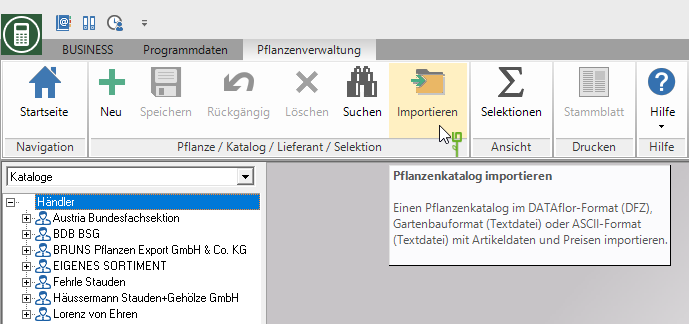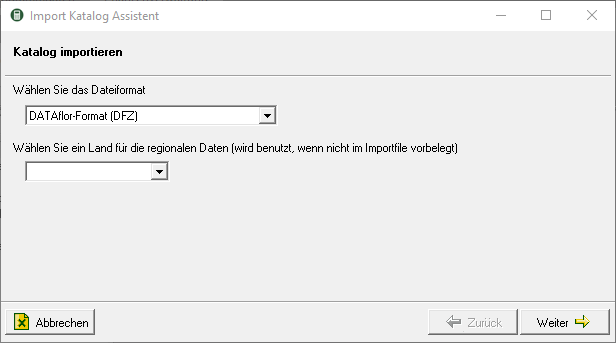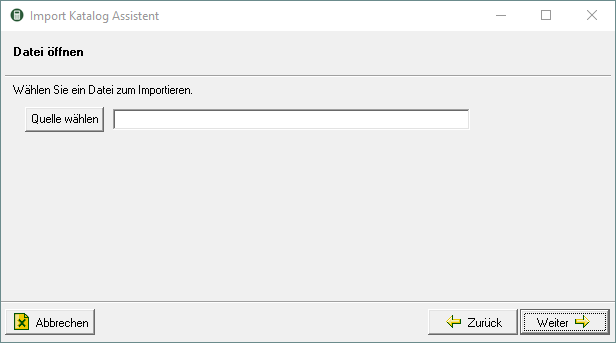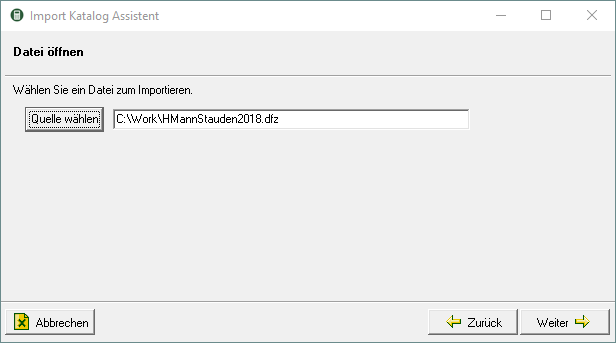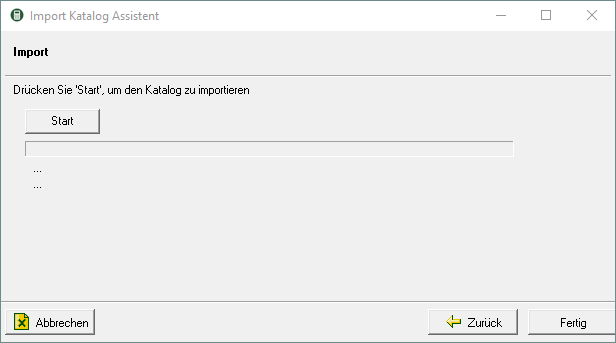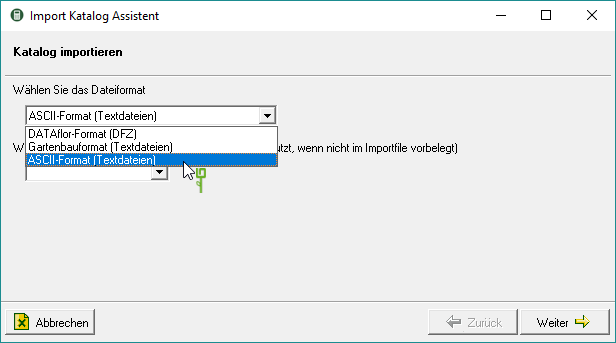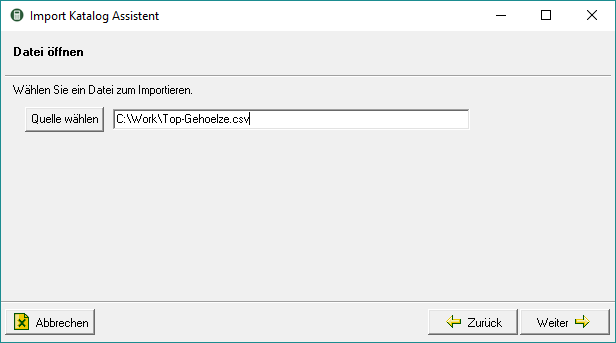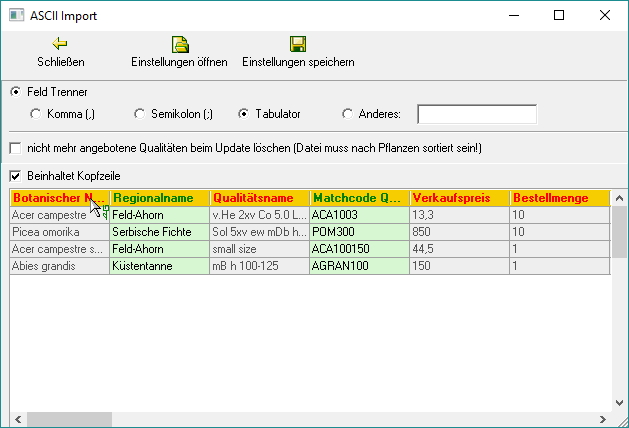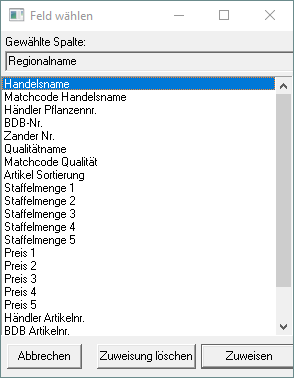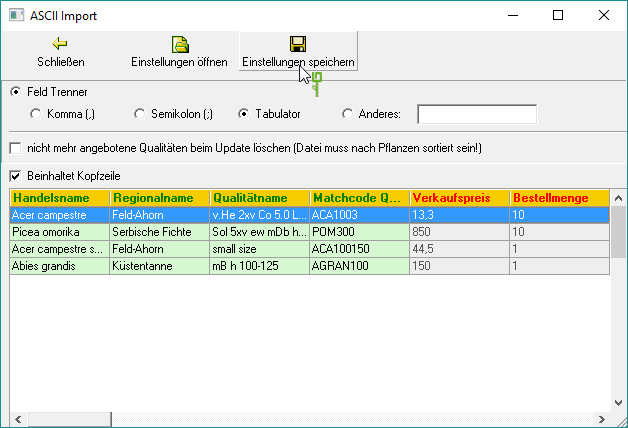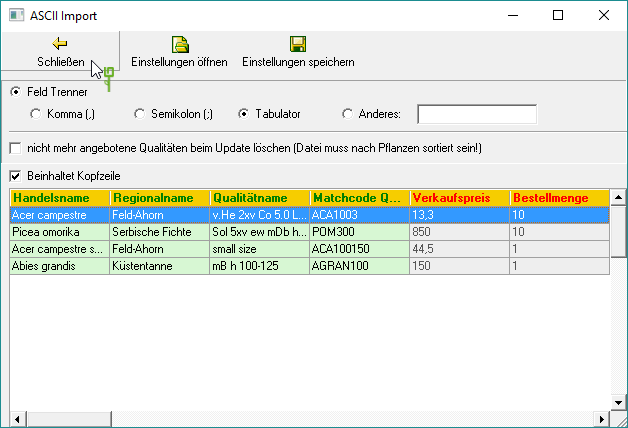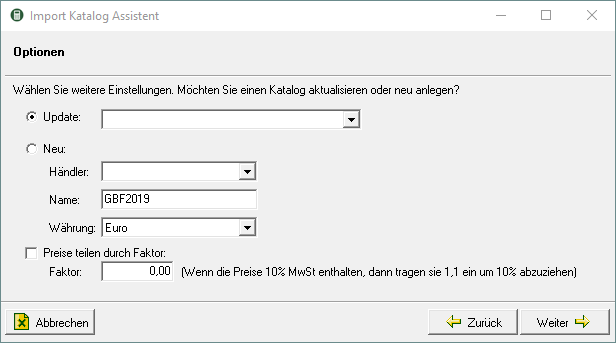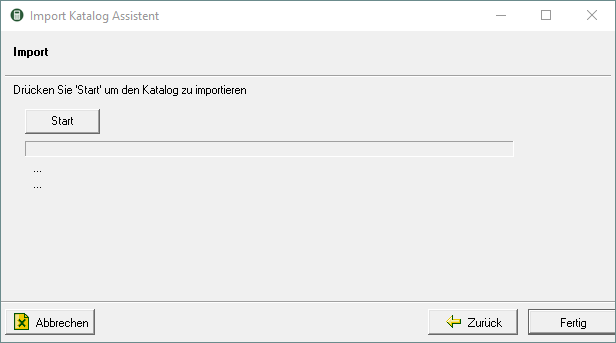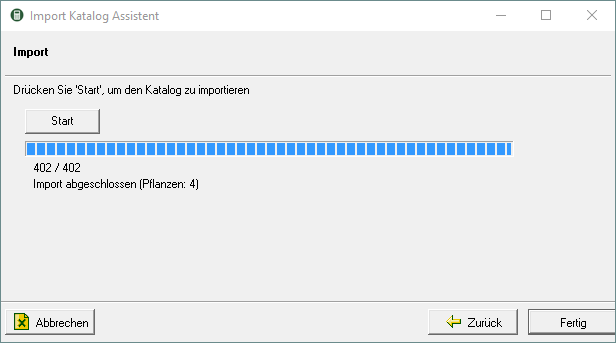Table of Contents
Read in external plant catalog
Description
It is possible to import plant catalogs from the program run using a wizard. This currently affects the import of catalogs in DATAflor-XML format, in future also in other formats.
On the part DATAflor Provided catalogs (eg BRUNS, Austria, Fehrle) are always replaced by the current catalog to be imported during import, so that your data is always up to date (prices, articles ...) and your connection is guaranteed in all program parts. E.g. an Acer campestre taken over from the BRUNS catalog 2011/2012 into a LV is also jumped correctly after a current BRUNS catalog update when switching from the LV to the plant master data.
Import DFZ file
If you are one of DATAflor provided catalog in DATAflor-Format want to read in, then proceed as follows:
- Select the view Catalogs on the left side of the screen and mark the entry in the directory tree Retailers.
- The file format DATAflor-Format (DFZ) is preset. Keep this setting (for from DATAflor created catalogs) or select plant catalog files in the Horticultural format or ASCII-Format (see following chapter).
- Choose yours Country in the selection box for countries (note: this information is only required if the catalog to be imported does not contain any country information).
- Now select the import catalog file that was delivered to you. By clicking [Choose source] open the Windows file selection dialog.
- By clicking [Begin] start the import process.
Depending on the data volume (catalog size) and computer speed, this process can take different lengths of time (0,5 to approx. 2 hours).
- After the import has finished, exit the import program by clicking on [Finished].
- Back on the knot Retailers the plant master data press F5 for Update Your ad.
The new catalog or the updated catalog data is now immediately available for access in the program.
The imported catalog data includes the plant designation with the nursery's trade name and colloquial names as well as the qualities and prices available at the nursery.
The import program compares the names with the existing names. Where matches are found, a Link to DATAflor-Plant stem educated. You can recognize this by the symbol:
| | with shortcut |
| | without link |
The link gives you the entire plant plus for this plant DATAflor-Plant database available (images, texts, attributes, scientific designation and care instructions). If you access the plant qualities of a nursery when creating a course, it is possible to print a list of plant pictures, for example.
Import text file
Analogous to the import of catalogs in DATAflorFormat, you can save plant catalog files in Horticultural format or ASCII-Format import.
- Select the view Catalogs on the left side of the screen and mark the entry in the directory tree Retailers.
- Confirm the setting with [Continue].
- When done, close the import window and refresh your catalog view by pressing F5.
The imported plants are now completely available in the program.
Does your data contain the BDB dealer number? Then you can at ASCII-Import advanced DATAflor Information (texts, images, etc.) on imported plants are displayed when you have assigned the BDB plant number.

